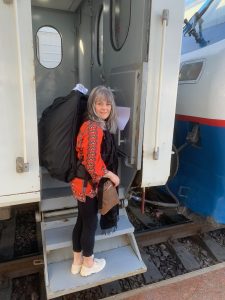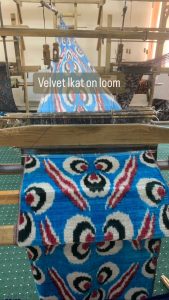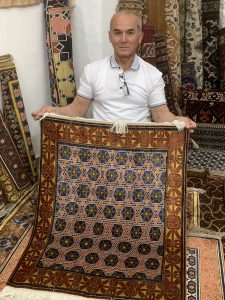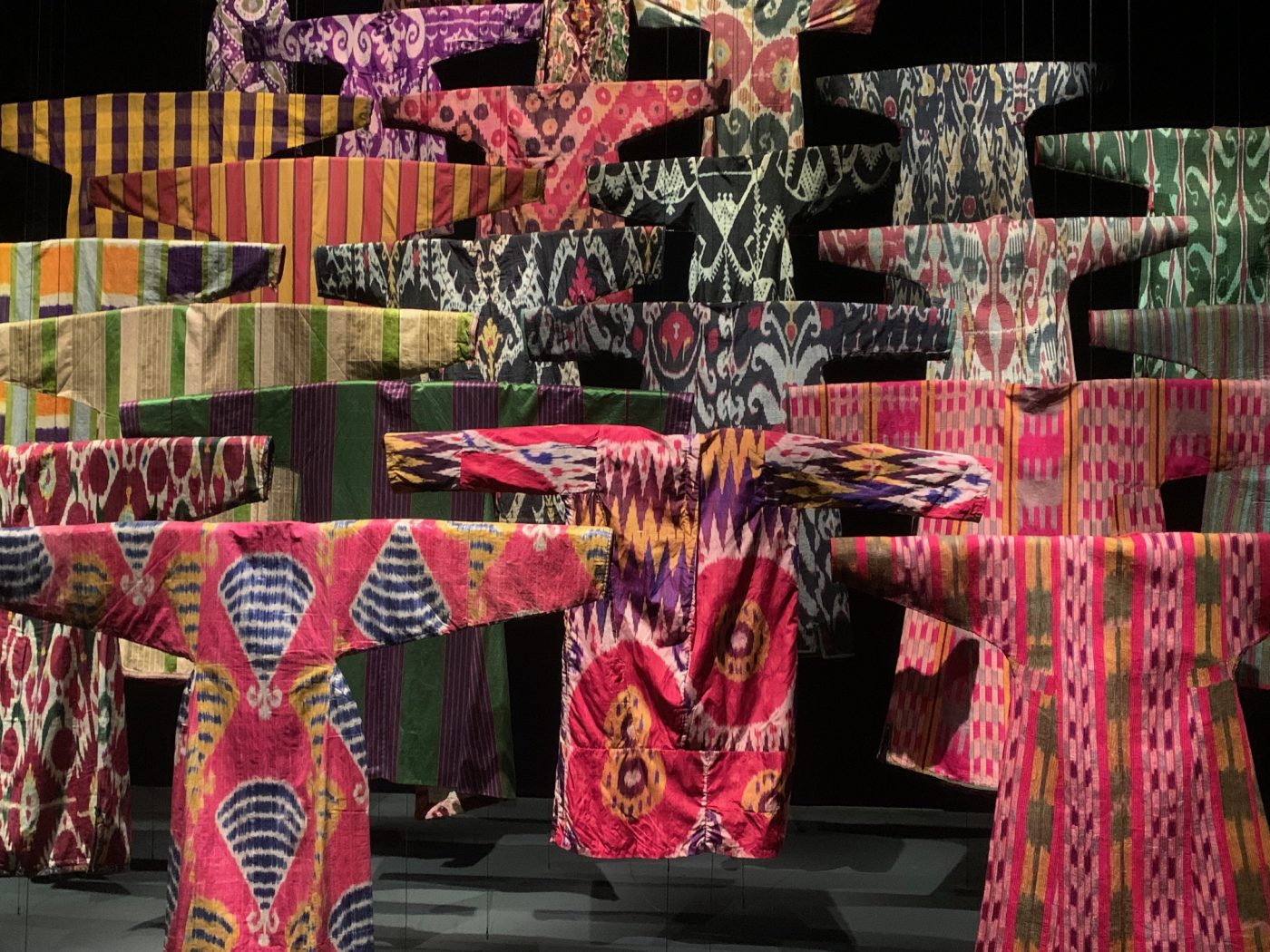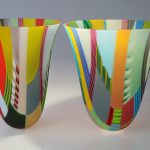Following my receipt of an Wales Arts International grant , I traveled to Uzbekistan in May to investigate direct similarities between Celtic andUzbek Designs, especially in textiles on the ancient Silk Road. I was facinated by the designs used on 14C Timurid Carpets.
Arriving in Tashkent, Uzbekistan’s capital, I spent a couple of days finding my feet and visiting sites, eg. Museum of Applied Art, Chorsu Bazaar, Metro etc. I proceeded to catch the train to Margilan in the Fergana Valley, an area which specialises in ikat weaving. The Velvet ikat weaving intrigued me and loved the colourful KumTepa Bazaar, whi
ch was 5km outside the city. Leaving Margilan, I stopped in Rishtan to visit a ceramic master Alisher Nazirov. What a joy it was to see him demonstrate his amazing decorative skills and meet his apprentices before moving on to Kokand to see the Khudayar Khan Palace.
A day later, I flew from Tashkent to Nukus, the other side of the country in the Karakalpakstan desert. I wanted to visit the unique and important Ig or Stavitsky Art Museum http://museum.kr.uz/
Later that day, I was driven to the acient city of Khiva in the Khorezm Desert. I had been invited to visit the Silk Weaving workshop to study there Timurid Designs, as they had a direct similarities with Celtic design. http://www.khiva.info/display.php?site=khivasilk&page=&lang=en. I felt very privileged and thankful to be there.
From Khiva I travelled by train through the Kyzyl Kum Desert to the medieval city of Bukhara, an important point on the Silk Route between China and Central Asia to the Middle East and the Mediterranean. The architecture astounded me and I especially loved the old pre-restored madrasahs which had a beautiful tranquil quality. I must give a big thanks here to Raisa and Azat from http://salomtravel.com who helped me tremendously in my arrangements.
I continued 250km south to one of the most ancient cities on earth, Samarkand. I had to pinch myself that I was actually there, walking around the mesmerising Registan. I especially found the Shah-i-Zinda Necropolis inspiring with tiles dating back to the 11C. Returning to Tashkent by the fast Afrosiyob Train, I spent a couple of days revisiting the Chorsu Bazaar and to see the Tamerlane statue in Amir Timur Square in order to give him a nod and thank him.
